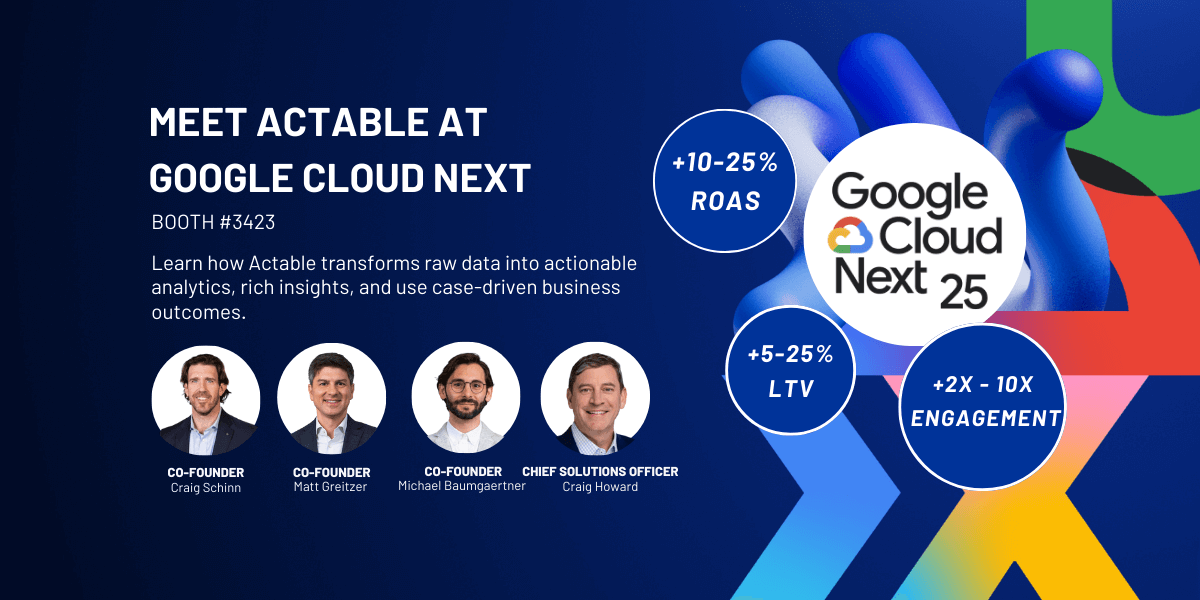Historically, CPGs primarily focused budgets on the highly-scalable third-party audiences curated by vendors and agency partners to help meet their brand marketing goals. The slow deprecation of third-party cookies has whittled away at the scale and quality of many third-party audiences forcing CPGs to look elsewhere for efficient yet scalable solutions. Further, many of the media measurement approaches (e.g.; brand lift survey, ad impression/frequency management) also rely heavily on third-party cookies. Unfortunately, there is no third-party panacea. The solution is a mix of tactics including first-party audiences activated via walled-gardens (Facebook, YouTube, Amazon, Tiktok, etc).
Further, CPGs have mostly relied on intermediaries (retailers, wholesalers, etc) to own the direct consumer purchase experience. In recent years many CPGs have been investing more and more in direct-to-consumer efforts. In so doing they’ve generated rich consumer purchase and engagement data ripe for monetization in a number of ways. However, they often have fledgling email communications still focused more on monthly product messaging vs consumer-segmented and/or personalized content.
Harnessing the value of first-party data with a CDP
The specific value that CDPs enable varies slightly from company to company, however the ones near the top of most lists are:
Evolving and diversifying the media audience strategy beyond third-party audiences
Activating first-party audiences in media is the most direct path to value for CPGs. First-party audiences can be activated in programmatic media to deepen consumer relationships through personalization and retargeting or drive consumer acquisition through more scalable look-a-like audiences. Both tactics can be layered into existing media plans to provide outsized media budget efficiency.
CDPs excel as the critical technology conduit between first-party data sources (e.g.; website, email, transactional, consent management) enabling audience creation and streamlined integrations with media activation endpoints.
One CPG marketer was able to build a brand interest audience based on various first-party data signals (e.g.; email and website content engagement) and seamlessly onboard it to their social and display endpoints. From there, the media team extended the reach of these seeds by modeling them out as lookalike audiences. The outcome was above average ROI for this first-party lookalike compared to other third-party purchase-based targets
Establishing (or replacing) centralized audience activation management
Centralized audience activation management is a critical value point for many CPGs as DMPs are being abandoned faster than the third-party cookie itself. Streamlined, centralized curation and activation of first-party audiences is an operational necessity for CPGs having numerous brands spread across various marketing teams. Success in this area requires collaborative planning to get the right team and processes in place from the start. Done wrong this can severely limit automation, reusability, and scalability across brands.
Another CPG established an Audience COE which provided portfolio-wide audience strategy, coordination and support across both first-party and third-party audiences. The CDP was leveraged by this COE team to organize and streamline their first-party audience integrations with downstream activation platforms working across 10+ brands and 4+ media agencies. This shortened the time-to-market by 2-3 weeks for first-party audience activations in media channels enabling the brand teams to be more nimble in their audience targeting throughout each quarterly campaign.
Enabling personalization and direct-to-consumer efforts
Delivering engaging experiences is key to deepening direct-to-consumer brand relationships, driving acquisition of new consumers and, ultimately, business growth. The aforementioned audience management coupled with segmentation and content affinity capabilities place CDPs high on the tech enabler list for CPGs interested in more robust owned channel (e.g.; email, website, apps) personalization.
A CPG tested their CDP’s website content affinity recommendations to power consistent consumer journey segmentation and messaging across email, website and social media leading to an overall increase in consumer engagement.
Deepening consumer insights
CPGs often do not have existing customer data environment (lakes or warehouses) for consumer reporting or insights projects. Because the CDP houses rich event and profile data, it can also be leveraged as a starting point for CPGs to unlock customer analytics and reporting. This data enables CPGs to track important consumer cohorts, goals, and surface consumer insights back into broader product and brand strategy can extend the value of CDPs beyond direct first-party audience activations.
Other CPGs are capitalizing on CDP integrations with data clean rooms to uncover consumer and measurement insights that fuel their acquisition, retention and broader advertising strategy. One global CPG exported Lytics CDP audiences to Liveramp to combine first-party audiences, Liveramp’s identity solution and third-party data to generate novel consumer insights.
It’s important to note, though, that this effort will require cross-functional data engineering, IT, legal, analytics, and insights team to stand up and maintain an analytical environment to store, analyze, visualize, and extract insights.
CPGs must overcome challenges to fully realize value with a CDP
Attaining the value above requires solid implementation, adoption, and measurement. Here are the key challenges particularly important for CPGs to consider in order to succeed in driving value from their first-party data with a CDP.
|
Operational fragmentation: The digital landscape within CPGs is often owned and managed by various internal and external teams. |
|
|
Data fragmentation: A common byproduct of operational fragmentation is data fragmentation. The numerous brands and lines of businesses within a CPG likely have fundamentally different business models and consumer bases or simply different data maturity levels. No matter the reason, often times there will be varying data schemas, naming conventions and inconsistently collected/defined data attributes. |
|
|
Technology fragmentation: Another common byproduct of operational fragmentation is technology fragmentation wherein the various CPG brands and lines of business make independent (siloed) technology infrastructure decisions. This can be anything from tag management tools to ESPs to data lakes. |
|
|
CDP Adoption: It can be difficult to drive tool and process utilization across disparate brands, lines of business and marketing teams within a CPG. This is where many CDP deployments stall when the data and tech is ready, but there aren’t teams with capacity and/or relevant use cases to utilize the new capability. |
|
|
Measurement: Without planned measurement it can be difficult to calculate the value of a CDP investment. An evergreen need for any major investment is ongoing ROI measurement to support ongoing investment justification and drive meaningful value to the organization. This can be especially challenging for CPGs where connecting sales to individual consumers isn’t feasible outside of smaller DTC programs. |
|
While there are many ways for CPGs to improve business outcomes with first-party data there are many challenges lurking in the shadows. Most CPGs are under-prepared for the technical and operational requirements needed to deliver value-added consumer experiences needed to deepen their relationships with consumers.
So what can be done to ensure your first-party data asset provides business value, enables first-party objectives and drives ongoing ROI?
-
Use Case Discovery: Build out an interdepartmental activation and analytics use case backlog before you select your CDP to ensure that your technical requirements can be met (e.g.; real-time personalization). Then keep it prioritized to ensure focus remains on the use cases that drive ROI
-
Accelerate Adoption: Plan for the cross-functional resource allocation, new roles and workflows that will be required to ensure successful implementation of your CDP and broader first-party data strategy
-
Data Enrichments: Identify use case data gaps that can be augmented with data enrichments; either through data science modeling or second/third-party data appends
-
Analytics & Measurement Roadmap: Plan your ROI measurement needs for use cases and overall CDP investment from the beginning to ensure you have the right control groups and testing methodology in place.









